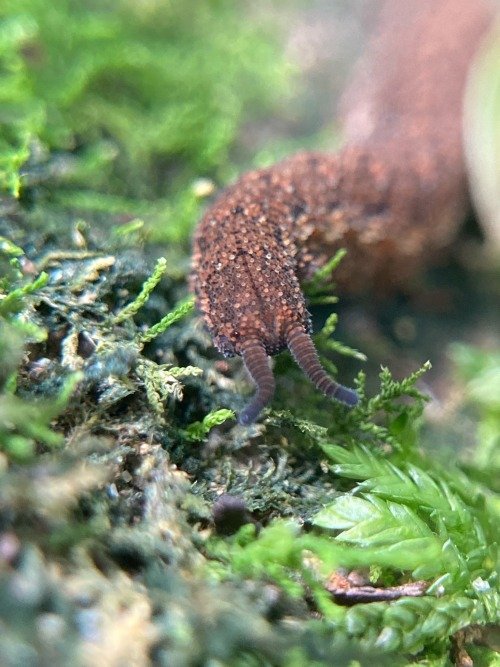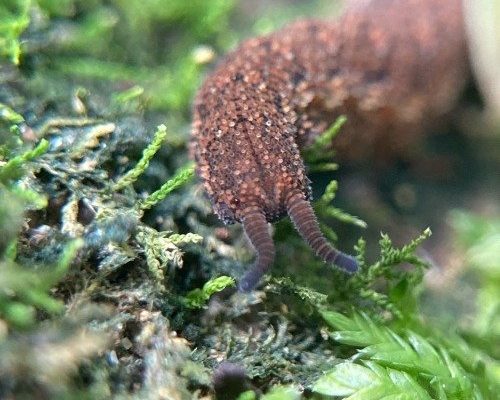
So, what exactly are velvet worms? These enchanting little beings belong to the phylum Onychophora, and they’re not insects, despite their worm-like shape. They’re more like a bridge between worms and arthropods, and they have a unique, soft body that can inspire awe. What’s intriguing about them is how they leave behind tracks and trails that tell tales of their journeys. Understanding these trails can deepen your appreciation for these remarkable organisms and the ecosystems they inhabit. Let’s dive into the world of velvet worms and learn how to observe their tracks and trails effectively.
What Are Velvet Worms?
Velvet worms are fascinating creatures that primarily dwell in moist, shady environments. They have a soft, velvety skin, which is where they get their name. Think of them as little “living fossils.” They’ve been around since the time of the dinosaurs, and they haven’t changed much since then. You can find them in places like rainforests or in leaf litter, where humidity keeps them comfortable.
These creatures are predatory, using their slime glands to capture prey such as insects and small invertebrates. They have a pretty unique way of moving, sliding along the ground with a graceful, creeping motion. When they travel, they leave behind trails that can give you key insights into their behavior and habitat preferences.
Next time you’re in a forest or a damp area, keep an eye out for their footprints. They often take a winding path, and the texture of their trails can look almost like a soft ribbon. Observing these trails can feel like stepping into the past, uncovering the mysteries of a creature that has been roaming the Earth for millions of years.
How to Identify Velvet Worm Tracks
Identifying velvet worm tracks can be both exciting and straightforward, especially with a keen eye. When you set out, look for trails that don’t just line up like typical animal tracks. Instead, you might see slime trails that can vary in width and texture—often around 1-2 mm wide. They can be slightly raised or indented in the ground, depending on the surface they’re traversing.
Here’s a helpful tip: the trails often have a wavy or zigzag pattern as velvet worms move. This unique movement is due to the way they use their many legs for locomotion. If the surface is wet, the trails are easier to spot. On dry surfaces, however, the tracks often fade away quickly, so timing your observation is crucial.
When you spot a trail, consider the environment. Velvet worms prefer damp, microhabitats, so you’re more likely to find their tracks in shaded areas, under decaying leaves, or around tree bases. Look closely, and you might even notice a change in the color of the soil where they’ve traveled. It’s nature’s version of leaving a calling card!
Why Observing Tracks Matters
Observing velvet worm tracks isn’t just a fun activity; it also plays a role in understanding biodiversity and ecosystems. By studying their movement and habitat preferences, researchers can gather valuable data on their ecology. This can help with conservation efforts, especially as these creatures are sensitive to environmental changes. If their habitats are destroyed, their populations can quickly decline.
Additionally, tracking velvet worms deepens our understanding of ancient life forms. Since these organisms have existed for over 500 million years, they act as a living link to our planet’s past. Their movements and behaviors can shed light on the evolutionary pathways that led to modern animals. Who wouldn’t want to be part of that exploration?
And let’s not forget the joy of discovery! For many, observing wildlife is not just educational but also a way to connect with nature. It can spark curiosity and a sense of responsibility toward the environment. So next time you see a velvet worm trail, remember—it’s not just a track; it’s a window into a world that has thrived long before us.
Tools for Observing Velvet Worm Tracks
You don’t need fancy equipment to observe velvet worm tracks, but a few simple tools can enhance your experience. Here’s a quick list to consider:
- Magnifying Glass: A simple magnifying glass can help you see the details of the tracks more clearly. You’ll notice the grooves and textures that make each trail unique.
- Camera: Capture your findings! A camera can document where you find tracks, which can be useful for identification and sharing your discoveries with others.
- Notebook: Jot down the locations and conditions of the trails you observe. This helps in tracking patterns over time and can be an excellent resource for future visits.
- Field Guide: A field guide specific to your region can aid in identifying local species and their habitats.
These tools can enhance your observation experience, turning a casual stroll into a mini research expedition. Remember, every track tells a story, and with the right tools, you become part of that narrative.
Challenges in Observing Velvet Worm Tracks
While observing velvet worm tracks can be a rewarding experience, it’s not without its challenges. The first hurdle is finding their tracks in the wild. Velvet worms are excellent at camouflage, blending into their surroundings. Their tracks may be hidden under leaves, dirt, or moss, making them tricky to spot.
Weather is also a factor. The best time for observing tracks is after rain or in humid conditions, as their trails are more apparent. On dry days, tracks may dry up quickly, leaving behind little to no evidence of their journey.
Additionally, if you’re in a popular area, footprints from other animals can mask velvet worm tracks. It might feel like a treasure hunt sometimes! But don’t be discouraged. The more you practice, the better you’ll become at spotting them.
Overall, stay patient and observant. Every outing is a chance to learn something new, and with time, you’ll become more skilled at locating these fascinating signs of velvet worm activity.
Where to Find Velvet Worm Tracks
Velvet worm tracks can be found in various environments, but they thrive in specific conditions. Here are some ideal places to look for them:
- Rainforests: These are the prime habitats for velvet worms. The humidity and rich leaf litter create an ideal environment for them to thrive.
- Wooded Areas: Look under logs, leaves, and rocks where moisture is retained. These spots are perfect for hiding due to the cover they provide.
- Moist Gardens: If you have a garden that stays damp, keep an eye out for trails trailing through the soil or mulch. You might even get a peek at a velvet worm itself!
When venturing out, try to explore different spots and conditions. Remember that velvet worms can be elusive, so being flexible and open to different environments can increase your chances of spotting their tracks.
Observing velvet worm tracks and trails is more than just a nature walk; it’s an enriching experience that connects you to the rhythms of the natural world. By taking the time to seek out these unique trails, you gain insight into the lives of these ancient creatures and the ecosystems they inhabit. Armed with curiosity and a few simple tools, you can embark on your own mini adventures, looking for the delicate signs that reveal the stories of velvet worms.
So next time you find yourself in a forest or a damp garden, take a moment to appreciate the journey beneath your feet. Who knows? You might just discover the hidden tracks of a velvet worm, leading you on a path of discovery and wonder! Happy exploring!

